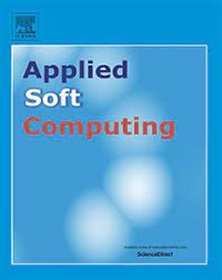Cancelable binary biometric template generation scheme based on partial walsh transformation and MinHash algorithm
IF 7.2
1区 计算机科学
Q1 COMPUTER SCIENCE, ARTIFICIAL INTELLIGENCE
引用次数: 0
Abstract
With the widespread use of biometrics, biometric templates stored in biometric systems are at serious risk of security and privacy breaches. Cancelable biometric scheme is an effective remedy when many unprotected biometric templates are compromised. We propose a cancelable binary biometric template generation scheme based on the partial Walsh transformation and the MinHash algorithm to improve recognition accuracy and generation efficiency. Firstly, the partial Walsh matrix transforms the high-dimensional original biometric feature into a low-dimensional space. Then, protected cancelable binary biometric templates are generated based on the proposed sliding window grouping minimum hash algorithm SWG-MinHash. Our scheme demonstrates superior recognition accuracy and generation efficiency on fingerprint and face databases compared to existing schemes. Meanwhile, our scheme satisfies the properties of non-invertibility, revocability, and unlinkability, and is resistant to common security and privacy attacks. Therefore, our scheme effectively mitigates the problem of balancing recognition accuracy, security, and generation efficiency of cancelable biometric schemes and is more practical for biometric systems. The source code of our scheme is available at https://github.com/sscwrx/cbef.
求助全文
约1分钟内获得全文
求助全文
来源期刊

Applied Soft Computing
工程技术-计算机:跨学科应用
CiteScore
15.80
自引率
6.90%
发文量
874
审稿时长
10.9 months
期刊介绍:
Applied Soft Computing is an international journal promoting an integrated view of soft computing to solve real life problems.The focus is to publish the highest quality research in application and convergence of the areas of Fuzzy Logic, Neural Networks, Evolutionary Computing, Rough Sets and other similar techniques to address real world complexities.
Applied Soft Computing is a rolling publication: articles are published as soon as the editor-in-chief has accepted them. Therefore, the web site will continuously be updated with new articles and the publication time will be short.
 求助内容:
求助内容: 应助结果提醒方式:
应助结果提醒方式:


